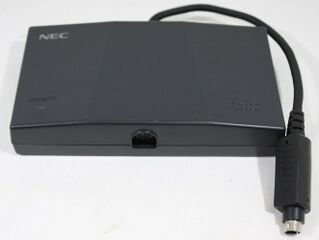Difference between revisions of "Memory Base 128"
From NEC Retro
(Created page with "{{AccessoryBob | accessoryimage=MemoryBase128 PCE.jpg | imgwidth= | accessoryprogramscreen= | title= | maker=NEC | madefor=PC Engine | romsize= | releases={{releasesPC...") |
|||
| Line 24: | Line 24: | ||
| region=JP | | region=JP | ||
| front=MemoryBase128 PCE JP Box Front.jpg | | front=MemoryBase128 PCE JP Box Front.jpg | ||
| − | | back= | + | | back=MemoryBase128 PCE JP Box Back.jpg |
| − | | spinemissing= | + | | spinemissing=yes |
| square=yes | | square=yes | ||
}} | }} | ||
Revision as of 15:30, 8 April 2019

| ||||||||||
| Memory Base 128 | ||||||||||
|---|---|---|---|---|---|---|---|---|---|---|
| Made for: PC Engine | ||||||||||
| Manufacturer: NEC | ||||||||||
|
This short article is in need of work. You can help NEC Retro by adding to it.
The Memory Base 128 was the final device released by NEC to allow PC Engine games to save data.
The Memory Base 128 solves many of the previous problems regarding PC Engine storage solutions offering being 128kB (or 128,000 blocks) and avoiding both the expansion port and HuCard slot. Instead, the device sits between the controller and the console, and runs on AA batteries.
Unfortunately, its design means that games have to be specifically written for the Memory Base 128, which essentially makes it incompatible with every PC Engine or CD-ROM² game released between 1987 and 1993.
Physical scans
References
| PC Engine |
|---|
| PC Engine (1987) | CoreGrafx (1989) | CoreGrafx II (1991) X1 Twin (1987) | PC-KD863G (1988) | Shuttle (1989) | GT (1990) | LT (1991) |
| Add-Ons |
| AV Booster (1988) | Interface Unit (1988) | Ten no Koe 2 (1989) | Backup Booster (1989) | Backup Booster II (1989) | Ten no Koe Bank (1991) | Memory Base 128 (1993) |

